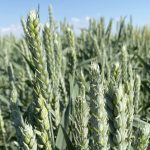By Glen Hallick, MarketsFarm
Glacier Farm Media MarketsFarm – Intercontinental Exchange canola futures climbed higher on Tuesday, getting a boost from gains in Chicago soyoil and European rapeseed.
Attempts to encourage more farmer selling was another reason for canola turning positive on Tuesday.
However, the Canadian oilseed’s increases were tempered by declines in Chicago soybeans and soymeal along with Malaysian palm oil. Modest declines in crude oil also weighed on the vegetable oils.
Ongoing concerns about dry conditions remained in the background. Should the Prairies not receive timely rains, this year’s crop could be further threatened by dryness.
Read Also
North American Grain and Oilseed Review: Canola closes higher
Trump/Xi meeting continues to push up U.S. prices By Glen Hallick, MarketsFarm Glacier FarmMedia MarketsFarm – Canola futures on the…
The Canadian dollar slipped lower on Tuesday afternoon with the loonie at 72.90 U.S. cents compared to Monday’s close of 73.03.
There were 27,846 contracts traded on Tuesday, compared to 29,028 on Monday. Spreading accounted for 10,356 contracts traded.
Prices are in Canadian dollars per metric tonne:
Price Change Canola Nov 690.80 up 8.20 Jan 698.90 up 8.00 Mar 705.10 up 7.70 May 710.00 up 6.90
SOYBEAN futures at the Chicago Board of Trade were lower on Tuesday following the United States Department of Agriculture crop progress report.
U.S. soybeans ratings rose four points at 70 per cent good to excellent as of July 13. Soybeans blooming progressed 15 points at 47 per cent, in line with the five-year average. Soybean setting pods rose eight points at 15 per cent, one point ahead of the average.
The U.S. National Oilseed Processors Association issued its June report with 185.70 million bushels of soybeans crushed. That’s slightly above the average trade guess of 185.20 million bushels and about 5.8 per cent more than the previous June crush. Soyoil stocks came in at 1.37 billion pounds.
France forecast its 2025/26 rapeseed output at 4.2 million tonnes, up 8.2 per cent compared to the previous year.
CORN futures nudged up on Tuesday in trying to retain yesterday’s increases.
The U.S. seven-day weather forecast called for one to three inches of rain across the Corn Belt.
U.S. corn remained at 74 per cent good to excellent. Corn silking was up 16 points at 34 per cent, one point up on the five-year average. Corn dough rose four points to seven per cent, two points ahead of pace.
Safras & Mercado placed the Brazilian safrinha corn harvest at 26 per cent complete, seven points below the five-year average.
WHEAT futures were mixed on Tuesday, with small increases in hard red winter, but losses in soft red winter and spring varieties.
The U.S. winter wheat harvest advanced 10 points at 63 per cent finished, virtually on par with the five-year average. U.S. spring wheat quality ratings improve four points at 54 per cent good to excellent.
IKAR lowered its call on total Russian grain production in 2025/26 by 1.5 million tonnes at 130.3 million. Wheat output was trimmed 500,000 tonnes at 84 million due to drought in Russia’s Rostov region.
France projected its 2025/26 soft wheat crop to produce 32.6 million tonnes, up 27 per cent from last year.










